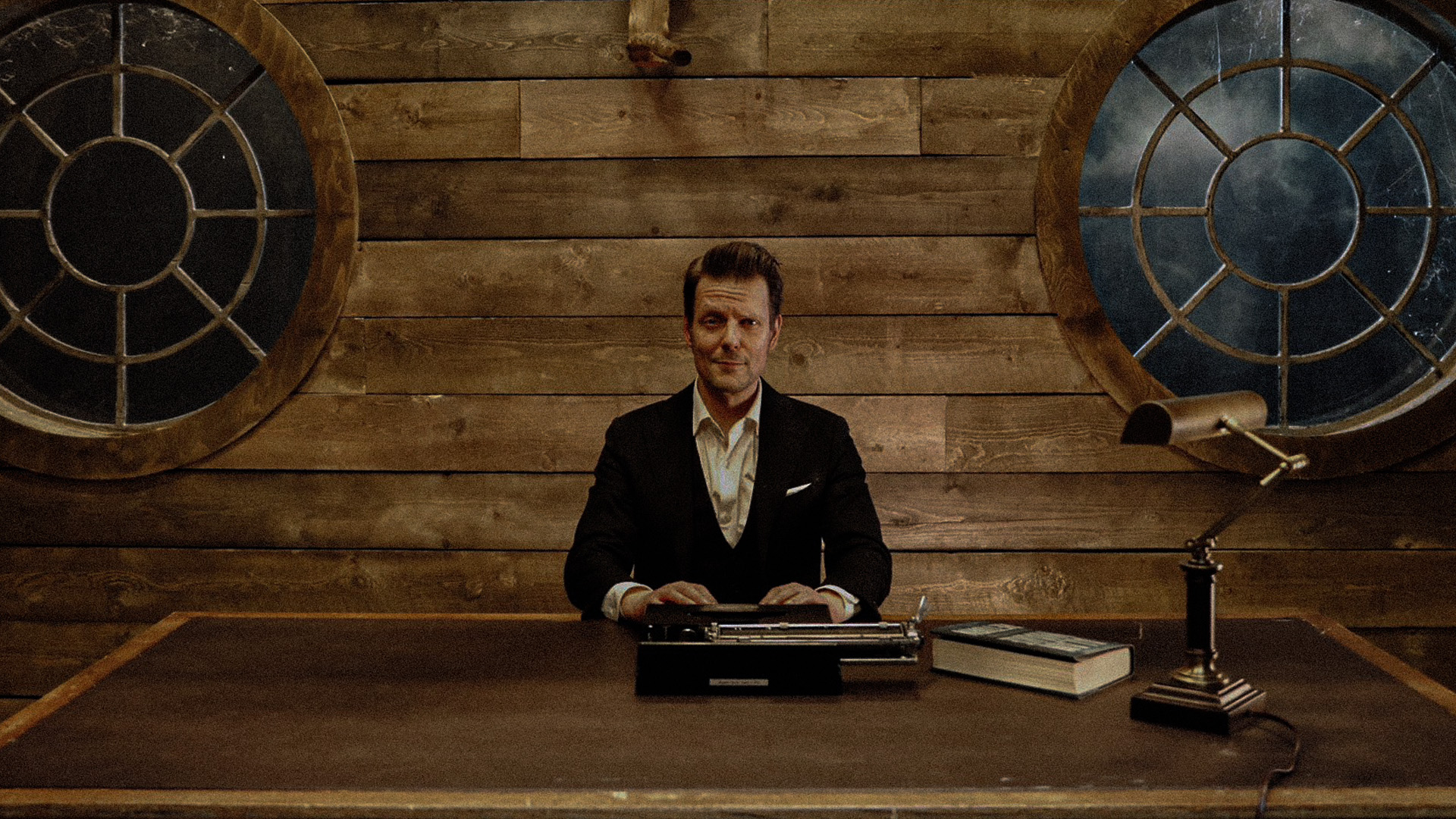We’ve been waiting thirteen years for the second part of Alan Wake. Over the years, the game has acquired a very complex but attractive mythology thanks to the spin-off Alan Wake’s American Nightmare, hints in Quantum Break and references in Control, which itself eventually turned out to be a spin-off of Alan Wake. She was doomed to terrible hype and high expectations that were difficult to justify. But Remedy did it.
Alan Wake 2 is a game that’s hard to understand, but you don’t need to understand it
Because she works according to the same, already slightly meme “logic of sleep” (which is found not only in horror films). Everything in the game happens according to logic, but this logic is so ephemeral that at times what is happening seems like complete nonsense, which is impossible to follow. Or maybe she really is. Minor events are forgotten, and then emerge in memory and turn out to be extremely important. But initially important movements, on the contrary, become thinner and lose meaning, although they can later acquire a new one. But how could it be otherwise in a game about a writer who was invented either by a poet or by a director who erased himself from reality, so that the writer would then reinvent him. Although the sequence may be different, it is a chicken or egg issue.
In the first part, writer Alan Wake came to the quiet town of Bright Falls, located on the shores of Lake Cauldron, to find rest and peace there. But he found a dark entity that dragged Alan’s wife into some creepy dimension. Wake saved his wife, but took her place in the “dark abode”, from which he has been unsuccessfully trying to escape all these thirteen years. Everything that Wake writes, sitting in a dark monastery, becomes reality. But only as long as the writing maintains the logic and plausibility of Wake’s story. And his story is a King horror story, so simply writing a naive happy ending won’t work.
The problem is that it is impossible to clearly define the boundaries of reality and the world of illusions in which Wake finds himself. And how sure can we be that these illusions are unreal? Wake literally exists in a universe of endless nightmare: he either desperately writes, then gives up everything, plunging into madness, then finally gets out of the monastery, but this turns out to be just another fiction. And everyone whom Wake writes into history is faced not only with the horrors of his “horror story,” but also with a floating reality, the gradual substitution of memories and other phantasmagoric crises. And you need to get lost in this. You need to take everything on faith and go with the flow. The game will help because this is how dream logic works. Well, or the logic of a nightmare.
Even the monsters in Alan Wake 2 are vague shadows that can simply dissolve in the light of a flashlight, or they can materialize and hit you on the head with a hammer
Alan Wake 2 is an original meta-work
Dealing with the writer’s problems fell to a pair of FBI detectives – Saga Anderson and Alex Casey, who initially came to Bright Falls to investigate a series of ritual murders. Saga is the second playable character after Alan in Alan Wake 2 and, in fact, the main character of the second part. She is more “normal” compared to Alan and in some way represents us, the players in the world of the game. But much more interesting is her partner Alex Casey, played by Remedy head writer and the face of Max Payne – Sam Lake (and voiced by James McCaffrey, the voice of Max Payne). Because Casey is actually the main character in Alan Wake’s novels.
But Wake didn’t come up with Casey. Alex had his own life before the writer’s works. But at the same time, in Alan Wake 2 we see how Wake’s books still influenced Casey’s life in the most mystical way, long before the detective arrived in Bright Falls. His past, seemingly unrelated to Wake at all, is now also part of history and is influenced by it. Because the power of the dark monastery twists time and space into a loop, and then into a spiral. Saga also faces this, at first confident in her memories, but gradually questioning them, which only helps the changed history become reality. Therefore, the events of “Alan Wake” and all the works related to him are a bad schizophrenic dream, into which it is scary, but very interesting to plunge.
The story gradually goes beyond the fate of Alan himself and breaks down all possible walls. Filled with the spirit of True Detective, the murder investigation in the frightening primeval forests is increasingly imbued with Silent Hill psychological horror. And it becomes increasingly intertwined with Alan’s schizophrenic travels through the “dark dimension,” which looks like the darkest and dirtiest version of New York at night.
The story of Alan Wake 2 unfolds in the game and beyond: in a talk show and the author’s short film about men in a sauna, in a musical with a dancing Sam Lake and in fictional books about Alex Casey, in other games, our guesses and fictional songs (but in same time real) group Old Gods of Asgard. Cauldron is not a lake, but an ocean. And Alan Wake 2 is not a clone of Resident Evil, but David Lynch, the unreleased Silent Hills and The Stanley Parable from Pony Island. It creates a mystical meta-mess in the player’s head, but it is an important part of the story. The sooner you suppress disbelief, the more you peer into the world around you in search of clues and patterns, the deeper the immersion will be.
But Alan Wake 2 also has gameplay
And it doesn’t focus on just shooting like previous Remedy games. There’s not a lot of action in Alan Wake 2 at all – at least not the kind of action where we shoot people possessed by darkness in the head with a shotgun. Alan Wake spends more time running around in endless delirium through the schizophrenic labyrinths of a dark abode, while Saga Anderson melancholy explores the suspiciously dark and delightfully dense forests of the American wilderness. And there aren’t even puzzles as such in the game—it’s just walking. But in the context of the incredible picture and immersion in the phantasmagoria of Sam Lake and his friends, it is really enough.
And when the shooting happens, it turns out that Alan Wake 2 has moved away from its roots towards the latest Resident Evil (the ones from the third person). With the same view over the shoulder, with the same Tetris-like inventory management, with the same lack of ammo and with the same slowness of the whole process. But you still need to highlight enemies with a flashlight before you start shooting.
The goal of the gameplay in Alan Wake 2 is simple: to enhance immersion, add sharpness, surprise and horror to what is happening – sometimes viscous, and sometimes fleetingly scary. After all, without tangible danger there will be no primal fear.
Most of the time everything works like this, but sometimes the sense of proportion fails the developers. For example, when a whole crowd of enemies is unleashed on you. And the game’s combat mechanics are not designed for battles with large groups at all. Or when axes fly at you from the bushes in complete darkness and damned wolves jump out, killing Saga with a couple of bites. Or when the last checkpoint was half an hour ago, and now you are looting containers again. And in another suffocating boss fight – all the bosses in the game are like that. Well, it’s somehow strange to search for “collectables” scattered throughout the semi-open world to level up heroes, getting bogged down in the slow, routine backtracking in Alan Wake 2. All these things take you out of the atmosphere of the game. They don’t break it, but they break its meta-attitude, momentarily turning a unique work into an ordinary video game.
Naturally, you can go to Alan Wake 2 carp, and it’s not even difficult. To the problems listed above you can add brutal system requirements, soap on consoles, abundant bugs and largely filler mechanics with poking around in the palaces of Saga’s mind and rewriting reality in the dark monastery.
But that’s not what the game is about. Its flaws are just minor blemishes on a titanic work about the power of art, reason and storytelling. And in all its forms. From shootouts with monsters in the forest to abstract poems and video projections on a video game body. No one has ever done this before and will never do this, especially within the framework of a multi-genre multiverse.
Resident Evil 4 is not just a remake, but a reimagining


